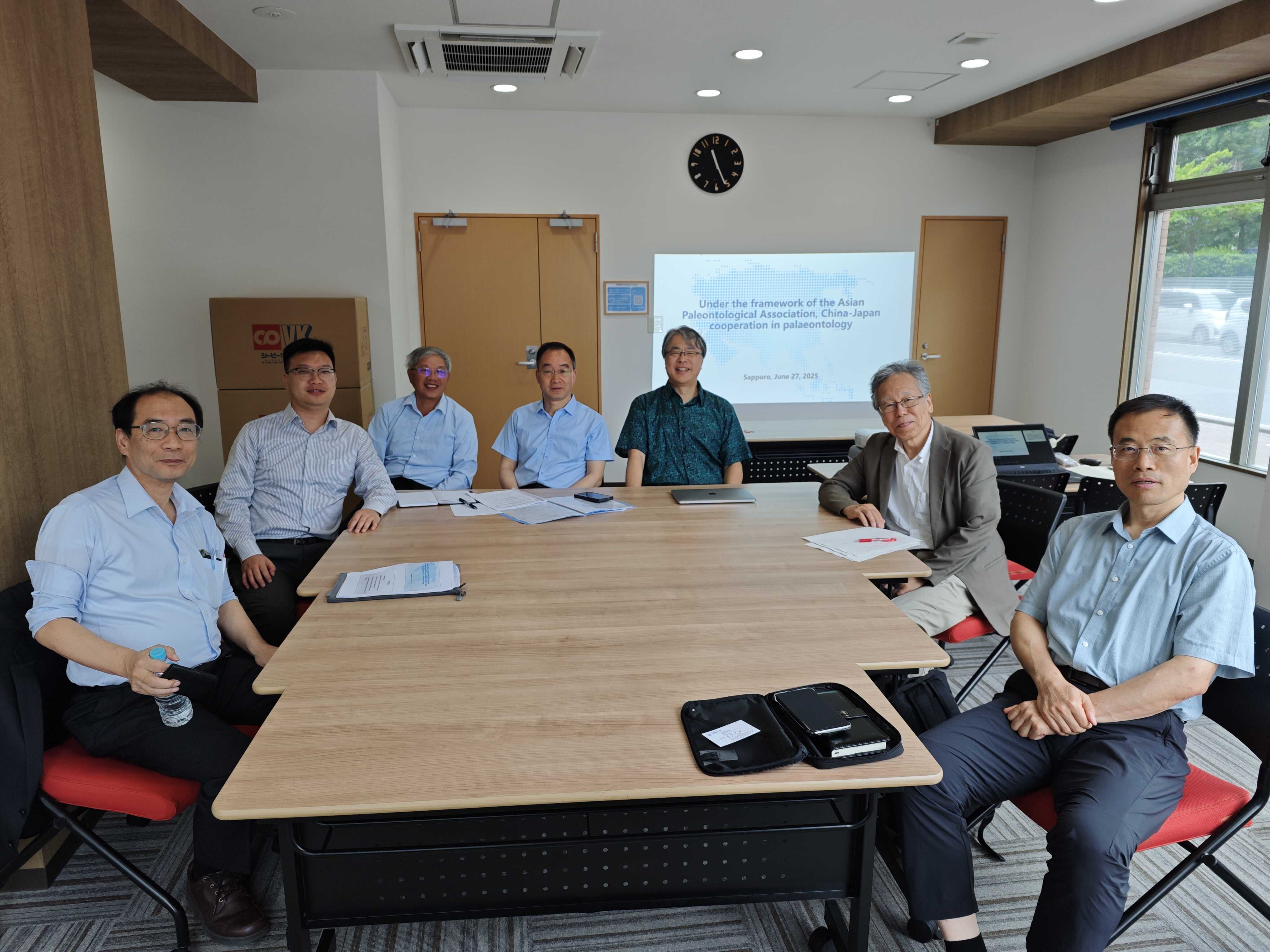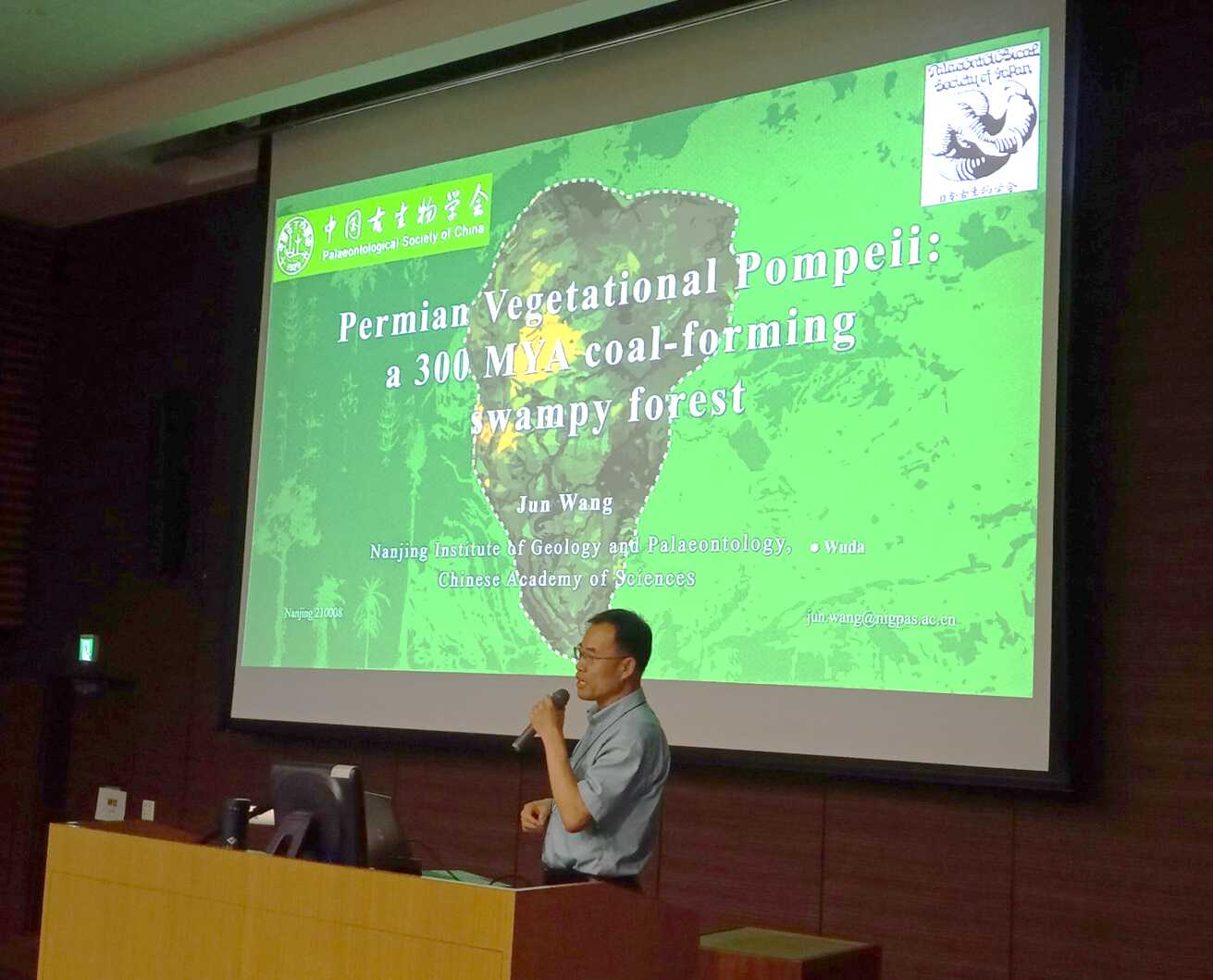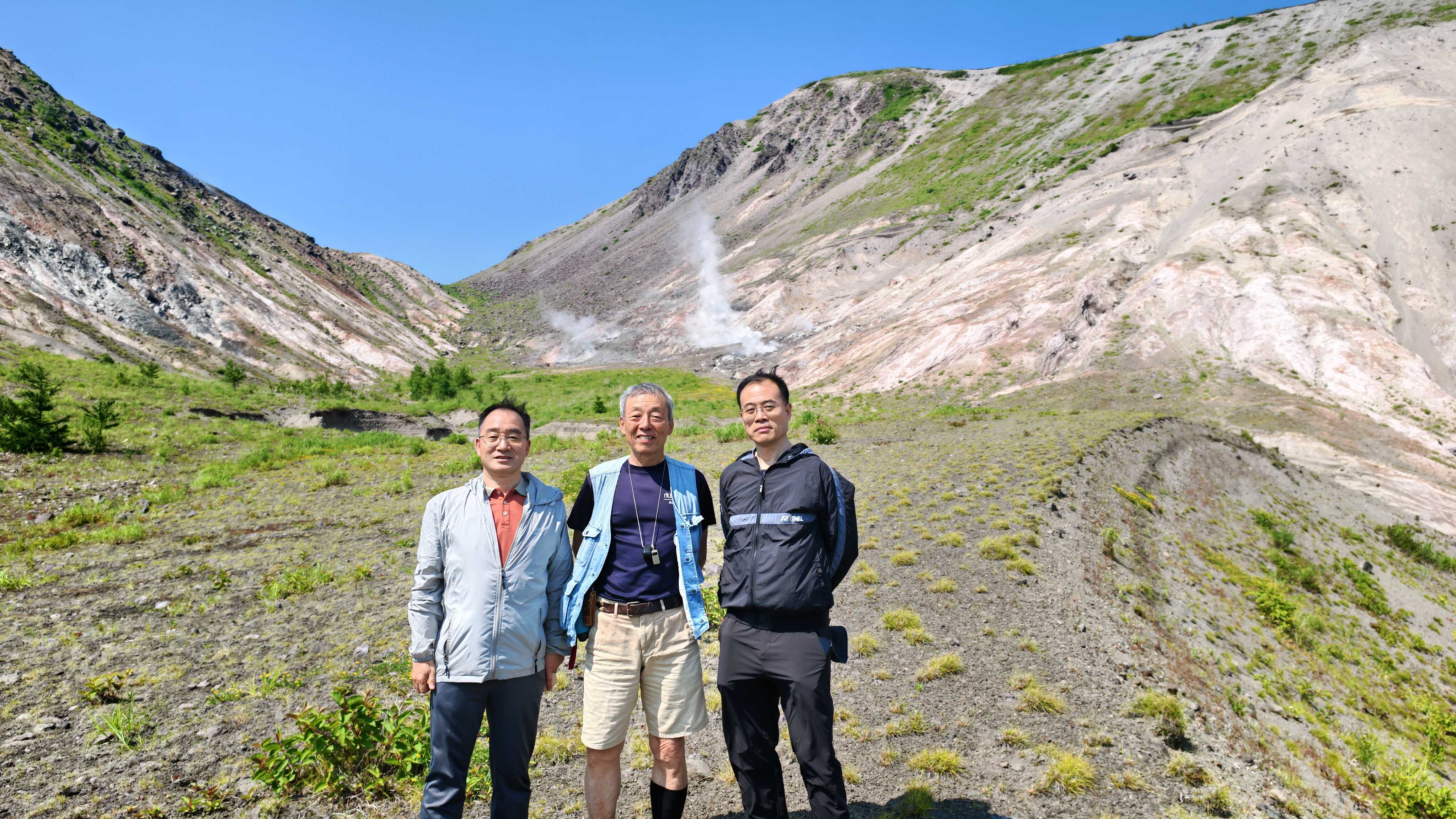China and Japan Strengthen Palaeontological Cooperation Under APA Framework
Sapporo, Japan - June 27~30, 2025
A bilateral meeting between Chinese and Japanese palaeontologists was held in Sapporo under the framework of the Asian Palaeontological Association (APA). The meeting aimed to deepen cooperation in fossil research,stratigraphy,and palaeogeography,especially in the context of East Asian geological evolution.

The session began with a brief but insightful review of APA’s milestones. Participants recalled the founding of the Association during the first Asian Palaeontological Congress in Beijing (2019) and its successful second congress in Tokyo (2023). Highlights such as APA’s active role at the 2024 International Geological Congress (IGC) in Korea were praised. Chinese representatives also presented recent scientific achievements, including the discovery of 1.63-billion-year-old multicellular eukaryotes and an Ediacaran crown-group sponge (Helicolocellus), reflecting the nation's leading role in palaeontological research.
Discussion then turned toward future collaborations. Professor Wang Jun proposed a comparative study on volcanic ash taphonomy and fossil preservation,involving sites in China,Japan and Europe. This project would explore how large-scale volcanic eruptions influence fossil conservation and stratigraphic integrity.
Another promising area is the Deep-Time Palaeogeography of East Asia project,aimed at reconstructing the region’s ancient environments. Experts noted Japan’s crucial geological position and invited Japanese institutions to contribute geochemical and palaeobotanical data. Proposals for cooperative research in Mesozoic plant evolution,radiolarian biostratigraphy,and metazoan origins were also well-received.
Other collaboration ideas included joint work on radiolarian biostratigraphy to improve stratigraphic correlation across East Asia,and studies on early animal evolution by integrating fossil records with biological sciences.
Both sides agreed to co-organize special sessions for the upcoming APA Congress (APC3) in Thailand and expressed interest in student exchanges and joint grant applications under China’s “Deep Earth” initiative.
The visiting Chinese delegation also participated in the 2025 Annual Meeting of the Palaeontological Society of Japan,held in Sapporo. During the conference,Professor Wang Jun,President of the Palaeontological Society of China,delivered a keynote lecture titled"Permian Vegetational Pompeii: a 300 MYA coal-forming swampy forest."The presentation received a very good response from Japanese palaeontologists.

To enhance mutual understanding of active volcanoes, Chinese and Japanese participants conducted a field excursion to Mount Usu (Mt. Usu) on June 29. This volcano is a basaltic andesitic stratovolcano with an outer crater approximately 1.8 km in diameter. It has experienced nine eruptions between 1663 and 2000. The fieldwork covered the Zenkoji landslide deposits (dated to around 8,000 years ago), lava domes formed during historical eruptions (such as Mt. Ko-Usu in 1822 and Showa-shinzan in 1945), as well as the eruption site from 1977–1978.

This meeting reaffirmed the shared commitment of Chinese and Japanese scientists to collaborative palaeontological research,laying a foundation for stronger academic ties across East Asia.
Attachment Download: